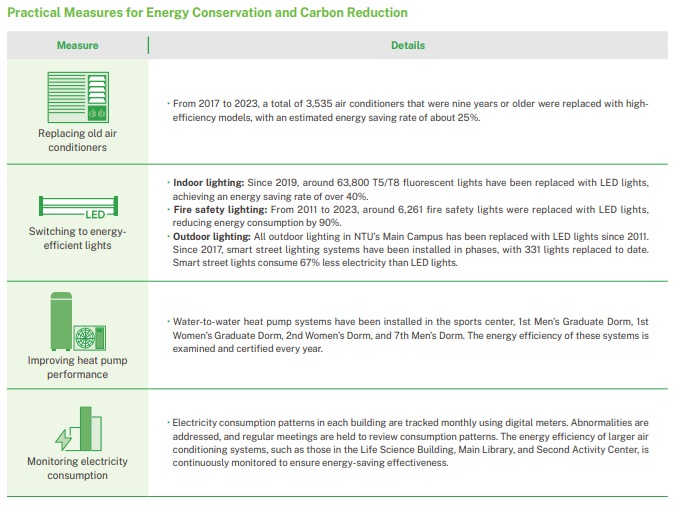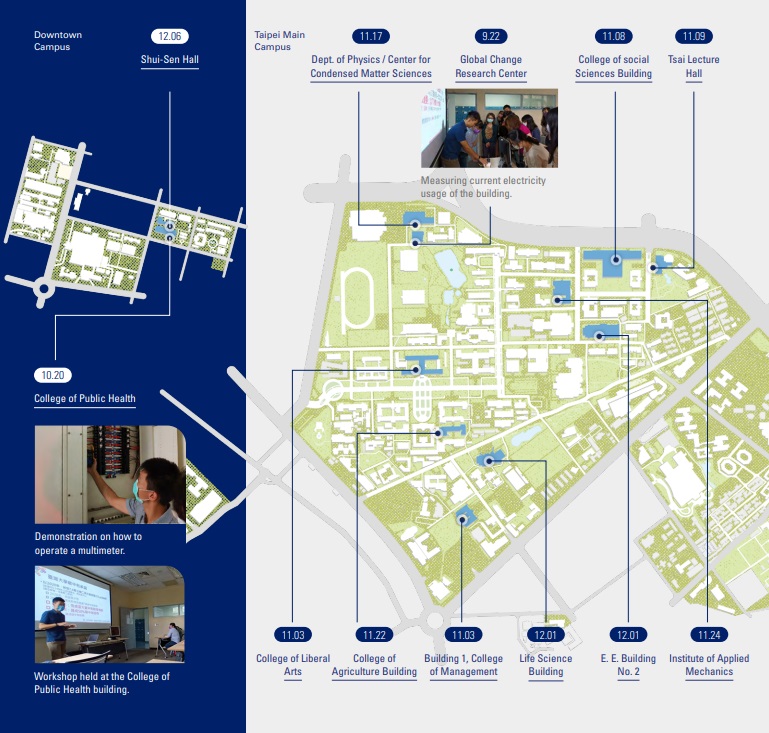POLICY & STRATEGY
NTU Carbon Neutral Strategies
The five major strategies for achieving carbon-neutrality are Equipment Electrification (reducing Category 1 carbon emissions), Energy Decarbonization, Energy Conservation (reducing Category 2 carbon emissions), Negative Emissions Technologies (NETs) and Carbon Offset. The strategy of Equipment Electrification and Energy Conservation is related to Energy Efficiency in Buildings. NTU Campus Planning Principle
Article 21: The orientation of buildings should, in principle, follow a north-south alignment. If the main lighting faces east-west, the design should fully consider the building facade in relation to sunlight exposure, shading, and energy-saving functions.
Article 22: New construction projects must meet at least the Bronze level of EEWH (Taiwan's green building certification). Energy-saving designs should be incorporated at the architectural planning and design stage. Environmentally friendly methods are encouraged, with consideration given to aspects such as lighting, ventilation, shading, water resource recycling, and greenery.
NTU Regulations for the Energy Conservation Incentive Awards
This regulation aims to effectively reduce power consumption and encourage its faculty members and students to conserve energy.================================================================================
ACTIONS
NTU Energy Conservation Working Group
NTU had set up an Energy Conservation Working Group in 2008. The working group set up a structure to pursue energy conservation. Every department in the school is assigned a content person on matters related to energy conservation.

Practical Measures for Energy Conservation in Buildings
NTU showcases the main measures for energy conservation in our sustainable report. Office of General Affairs also published an annual report on energy consumption and energy conservation measures.
Energy Conservation Workshop
The energy conservation workshops enabled faculty, staff and students from different divisions and disciplines to gain a sound knowledge of electricity usage data and energy consumption patterns of buildings and equipment. NTU organized 12 energy conservation workshops, which were attended by 106 participants, including faculty members, students and staff from all 11 colleges.===============================================================================






